 By Pepper Parr
By Pepper Parr
October 21st, 2020
BURLINGTON, ON
It was one heck of a meeting, delivered in a workshop format
Angelo Bentivegna got to serve as chair; Jamie Tellier, currently the Interim Director of Community Planning, set out all the work the Planning Department has ahead of it. Councillor Stolte learned why zoning bylaw reports are numbered the way they are and city manager assured council that the 22 people that have to be added to the planning department staff will not all be taken on in one year – building the staff compliment will take about five years.
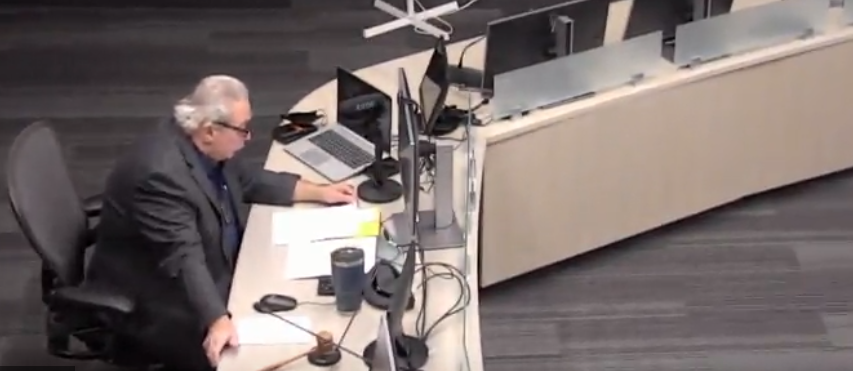
Ward 6 Councillor Angelo Bentivegna is in the Chair
Tellier has a delivery style that is a delight to hear – he laughs at the few mistakes he makes and chuckles frequently when he is explaining something. He is the kind of person who really puts the J in Joy. He used a number of slides to get his message across.
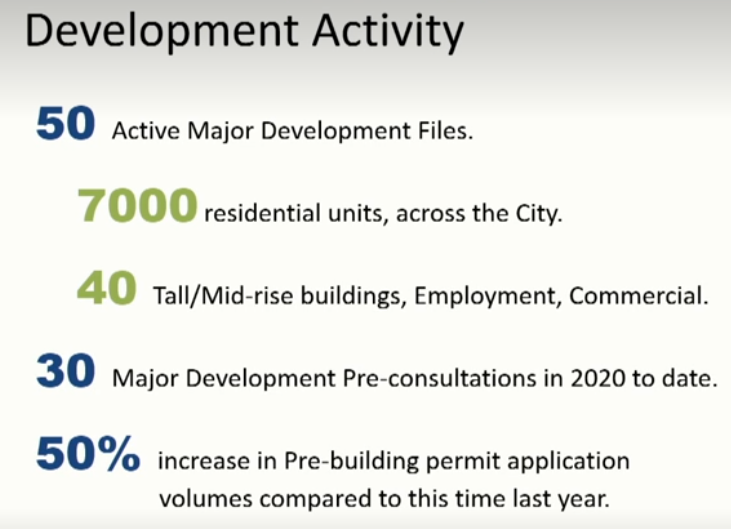
The numbers startled several of the Councillors – there was more to come.
Tellier started out by telling Councillor that with the Scoped Review of the Downtown portion of the Official Plan completed and the Interim Control Bylaw in place until all the appeals at that level are completed, the planners now get on with the real job of growing the planning department so that it can cope with the work that is ahead of it.
Tellier set out the organizational structure that is in place with three different working groups set out in the graphic below.
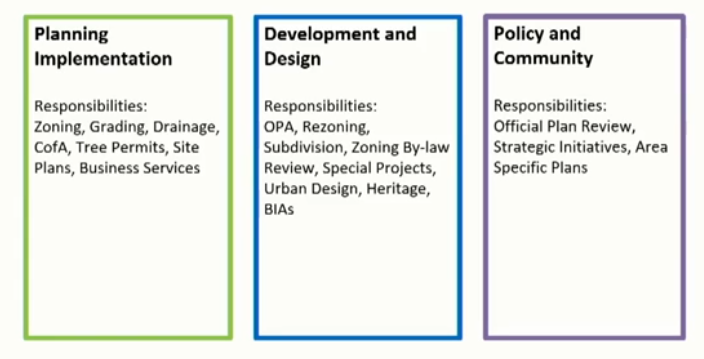
Council has always believed that development should pay for the work the planning department has to do. A consultant has been hired to do a Planning Application Fee Review; that report is due sometime in November.
Once full cost recovery is in place the planners will be able to bring in the staff they will need.
Tellier didn’t even try to hide his excitement over just how big a deal the passing of the Official Plan earlier in October was. “It was the end of a very long journey,” he said.
The next phase of that journey will take place at the Region on Wednesday (today) where the matter of the Urban Growth Boundary will be reviewed as well as the boundaries for what used to be called transportation hubs. They are now described as Major Transit Service Areas. (MTSA)
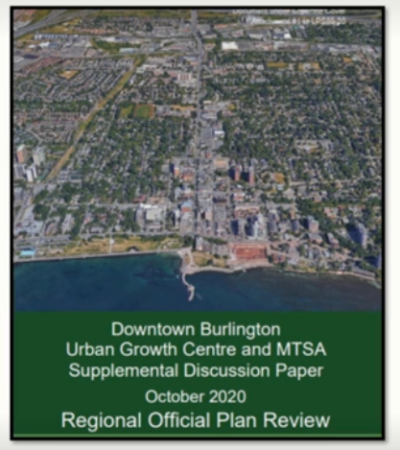
Urban Growth and transportation – residential housing locations will be debated at the Region on Wednesday.
The John Street bus terminal that was once called an MTSA has been deemed to be just a bus terminal – which is not defined in the the Planning Act and therefore not a concern.
At the Regional Council meeting Mayor Meed Ward expects to be vindicated for her long held position that the John Street bus terminal designation be removed.
There were those in Burlington who said this would never happen. They were wrong.
Burlington will have three MTSAs: Burlington GO station; Aldershot Go Station and the Appleby GO station. Boundaries have been established for all three but have yet to be made final. These MTSA’s are where the growth in residential housing is to take place.
The Gazette will report on what takes place at the Regional Council meeting in detail.
A draft version of the Regional review of the Burlington Official Plan is expected early in November. Council will go over that document – send its comments back to the Region after which the city will have an Official Plan that will be appeal-able at LPAT.
While all this is taking place there is a Land Use Study being done by Dillon that the city expects to see in November.
The Region is also doing a phased Municipal Comprehensive Review as part of its Official Plan Review. The MTSA and UGC questions are part of that process.
Tellier took some delight in pointing out that the fist change to an Official Plan that is yet to be fully Official is on its way. He added that all this is very complex and can be confusing.
The work being done on what were originally known as Transportation hubs, now called MTSAs, will be referred to as Area Specific Plans. That work was started in 2017 and paused in 2019 and has now become part of the work plan for which the city is going to have to hire as many as 22 additional staff.
Tellier and City manager Tim Commisso stressed that these jobs would not be filled in the immediate future and that when they are filled the work they do will be paid for by the fees collected from the developers. The developers will of course add those fees to the cost of the housing they build.
The Planning Department and the Office of the City Solicitor have both submitted their budget requests.
Tellier spent most of the two hours explaining the work the Planning department now had to take on.
There is to be a community housing strategy.
There is to be a review of heritage sites in the downtown core.
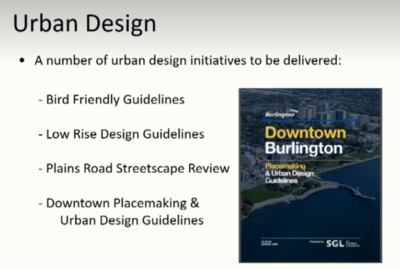
There are Guidelines for everything now.
There is the Urban Design thinking, which Tellier described as “the glue” that keeps everything together.
There is a Pre-building permit process that is being put in place – this was intended for individuals who want to build a deck or install a swimming pool who don’t have the experience or skills to work their way through the way city hall works. The intention is to have a single person point of reference. This is covered by the Service Review Study that has taken place.
COVID has forced the city to find a better way of getting documents filed. Developers would come in with boxes and boxes of reports; now everything comes digitally.
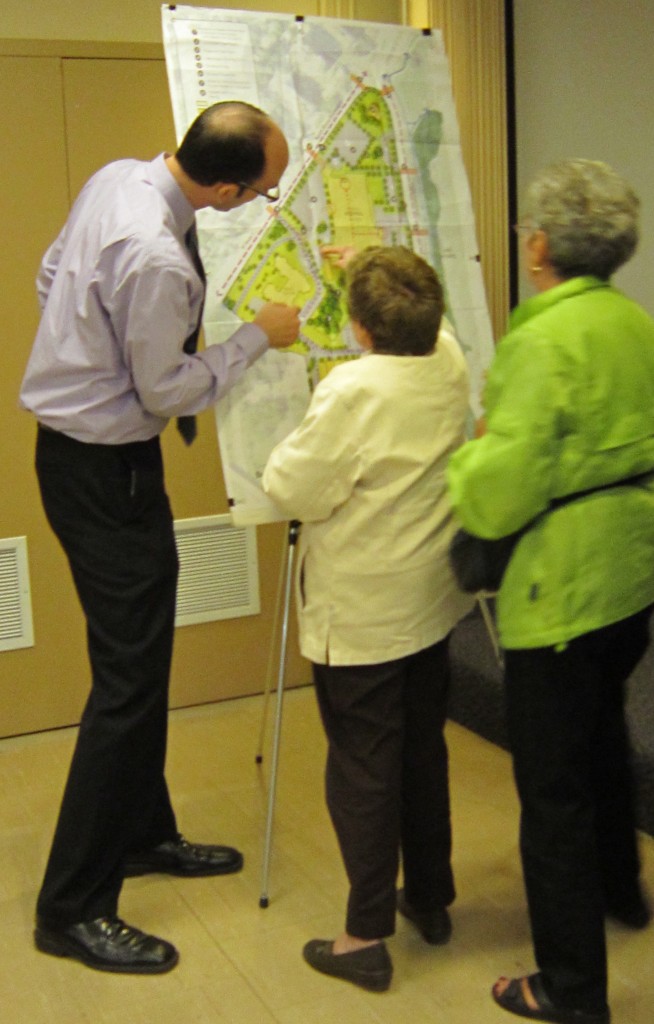
Jamie Tellier explains what is going to be built where on the Joseph Brant Hospital campus.
Tellier explained that Planning has had to lean heavily on Information Services for both direction and support.
The Core Commitment is due for a serious review as well.
Tellier gave some insight into the complexity of the work to be done. Much of it involves liaising with legal, roads, transit, transportation and community planning.
In summing up, Tellier cheerfully said: That’s it!
Following all this is going to be a challenge.

















